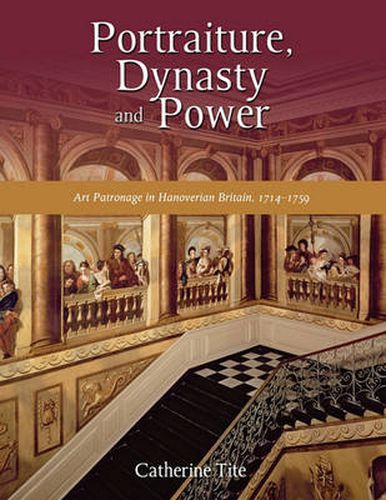Readings Newsletter
Become a Readings Member to make your shopping experience even easier.
Sign in or sign up for free!
You’re not far away from qualifying for FREE standard shipping within Australia
You’ve qualified for FREE standard shipping within Australia
The cart is loading…






This title is printed to order. This book may have been self-published. If so, we cannot guarantee the quality of the content. In the main most books will have gone through the editing process however some may not. We therefore suggest that you be aware of this before ordering this book. If in doubt check either the author or publisher’s details as we are unable to accept any returns unless they are faulty. Please contact us if you have any questions.
This book explores how and why perceptions of the British monarchy in visual culture changed during a period of growing social mobility and political modernity. In contrast to some recent scholarship, it works upon the central premise that cultural patronage by Hanoverians played a role in the production of their social identity. It systematically addresses the monarchy’s active role in the patronage of British artists, sculptors, and architects which demonstrated their refined tastes and, additionally, their Britishness . In a parallel case study, the author illustrates how courtly patronage in continental Germany (inspired by models from France or England) became an indicator of elite social status and cosmopolitan sophistication. The book further expands the insights reached in recent studies of Hanoverian patronage by amassing a wide variety of visual evidence including engraved portrait heads, miniatures, ephemeral art forms, and painting in conventional genres. Formulaic state portraiture and the efforts made by British and European-trained portraitists to vary conventions of depiction are discussed in the context of royal commissions and spaces of display. The book delineates, chapter by chapter, specific patrons (George II, Caroline of Ansbach, Frederick Prince of Wales, Anne, Princess Royal and Frederick and Mary of Hesse Cassel) and examines the cultural life of their courts (St James’s, Leicester House and Schloss Wilhelmstahl). Based on original evidence from archives in Britain and Germany, this study presents new research on the early eighteenth-century Royal family and offers a close study of the little-explored question of the early Georgian monarchy’s connection to protestant dynastic houses in continental Europe. The book immerses the reader in richly detailed descriptions of courtly space, country houses belonging to courtiers and elite supporters of the Hanoverian succession, and the perceptions of both by contemporary eighteenth-century observers. It also includes many rare color images.
$9.00 standard shipping within Australia
FREE standard shipping within Australia for orders over $100.00
Express & International shipping calculated at checkout
This title is printed to order. This book may have been self-published. If so, we cannot guarantee the quality of the content. In the main most books will have gone through the editing process however some may not. We therefore suggest that you be aware of this before ordering this book. If in doubt check either the author or publisher’s details as we are unable to accept any returns unless they are faulty. Please contact us if you have any questions.
This book explores how and why perceptions of the British monarchy in visual culture changed during a period of growing social mobility and political modernity. In contrast to some recent scholarship, it works upon the central premise that cultural patronage by Hanoverians played a role in the production of their social identity. It systematically addresses the monarchy’s active role in the patronage of British artists, sculptors, and architects which demonstrated their refined tastes and, additionally, their Britishness . In a parallel case study, the author illustrates how courtly patronage in continental Germany (inspired by models from France or England) became an indicator of elite social status and cosmopolitan sophistication. The book further expands the insights reached in recent studies of Hanoverian patronage by amassing a wide variety of visual evidence including engraved portrait heads, miniatures, ephemeral art forms, and painting in conventional genres. Formulaic state portraiture and the efforts made by British and European-trained portraitists to vary conventions of depiction are discussed in the context of royal commissions and spaces of display. The book delineates, chapter by chapter, specific patrons (George II, Caroline of Ansbach, Frederick Prince of Wales, Anne, Princess Royal and Frederick and Mary of Hesse Cassel) and examines the cultural life of their courts (St James’s, Leicester House and Schloss Wilhelmstahl). Based on original evidence from archives in Britain and Germany, this study presents new research on the early eighteenth-century Royal family and offers a close study of the little-explored question of the early Georgian monarchy’s connection to protestant dynastic houses in continental Europe. The book immerses the reader in richly detailed descriptions of courtly space, country houses belonging to courtiers and elite supporters of the Hanoverian succession, and the perceptions of both by contemporary eighteenth-century observers. It also includes many rare color images.